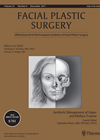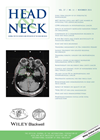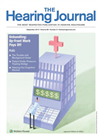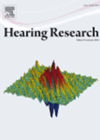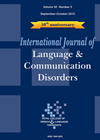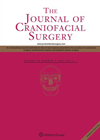
Journal Reviews archive for 2016
The initial management of nasal trauma
Fractures of the nose are the most common facial fractures and reported to be the third most common fracture of the human skeleton. Nasal trauma can lead to obvious or more subtle loss of function or form and cosmetic compromise....
Risk factors for pharyngocutaneous fistula after laryngectomy
Pharyngocutaneous or salivary fistula is a feared complication following laryngectomy, causing significant morbidity, prolonged hospital inpatient stay / cost and mortality. Previous radiotherapy / chemoradiotherapy is a well recognised risk factor and leads many surgeons to recommend onlay pectoralis major...
Listening in noise to predict learning disability
Noise disrupts the neural coding of consonants more than vowels. Listening in noise presents a challenge for everybody, but particularly to children whose language skills are underdeveloped. This team views background noise as a disruption to the necessary neural mechanisms...
Hearing intervention to prevent dementia
People with hearing impairment have an increased risk of incident all-cause dementia proportional to the severity of loss compared to those with normal hearing. Treating hearing impairment may therefore serve to slow or prevent the onset of cognitive decline. This...
Cochlear implants for tinnitus
This study from Belgium is the first to look at the long term reduction in tinnitus for a cohort of 23 patients with unilateral profound hearing loss and incapacitating tinnitus implanted with cochlear implants (CI). The authors were able to...
Childhood speech processing in background noise
Normal childhood development of the auditory systems involves mapping sounds to meaning and the neural coding of speech. Children are often subjected to adverse listening environments such as high levels of background noise. This paper aimed to delineate the effects...
Efficacy of interventions for stuttering: literature review
This is the first part of a two-article review of the efficacy of different modalities of treatments used for treatment of stuttering / stammering. In this article, the authors describe their efforts to identify and quantify evidence on various interventions...
Impact of lingual pumping in Parkinson’s patients with dysphagia
Dysphagia in Parkinson’s disease (PD) is one of the most important causes of mortality in these patients. Swallowing difficulty in Parkinson’s disease is associated with lingual pumping or festination, anterior escape, premature loss of bolus, oral and pharyngeal retention, multiple...
Shoulder function in patients undergoing neck dissection: its effects on work and leisure activities
Shoulder dysfunction is common after neck dissection and includes shoulder pain, limited abduction and scapular winging. Modifications of the radical neck dissection were designed to limit morbidity, however, even with accessory nerve-sparing neck dissections, shoulder dysfunction can be seen. Shoulder...
Predictors of complications in patients undergoing oral cavity cancer surgery
Surgical management of oral cavity cancers is complex, frequently involving extensive resections and complicated reconstructions. Quantification of risk in an individual patient may allow surgeons to more effectively identify patients at higher risk of complications and develop strategies for prevention,...
Identifying early flap failure
The holy grail of flap monitoring is an easy, reliable and predictive method to identify impending compromise. Does this paper provide it? Various methods have been used to improve our ability to monitor the viability of a flap and here...
The mark of the head and neck surgeon
Like Zorro, the head and neck surgeon leaves their mark. No more so than during parotid surgery. Various modifications have been put forward modifying the classic Blair incision. This latest modification camouflages the pre-tragal scar by running it on to...

